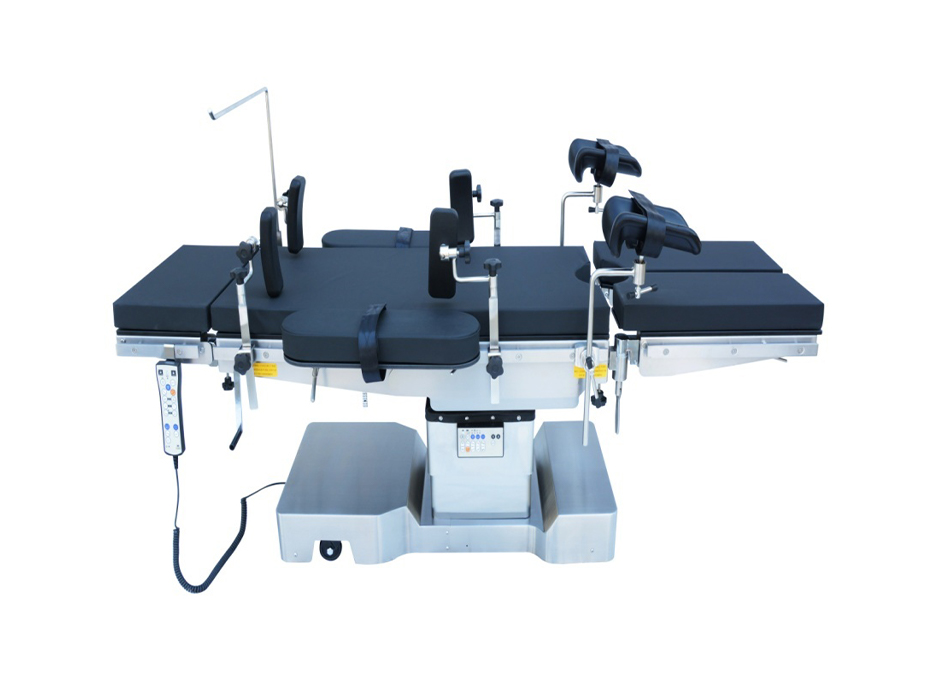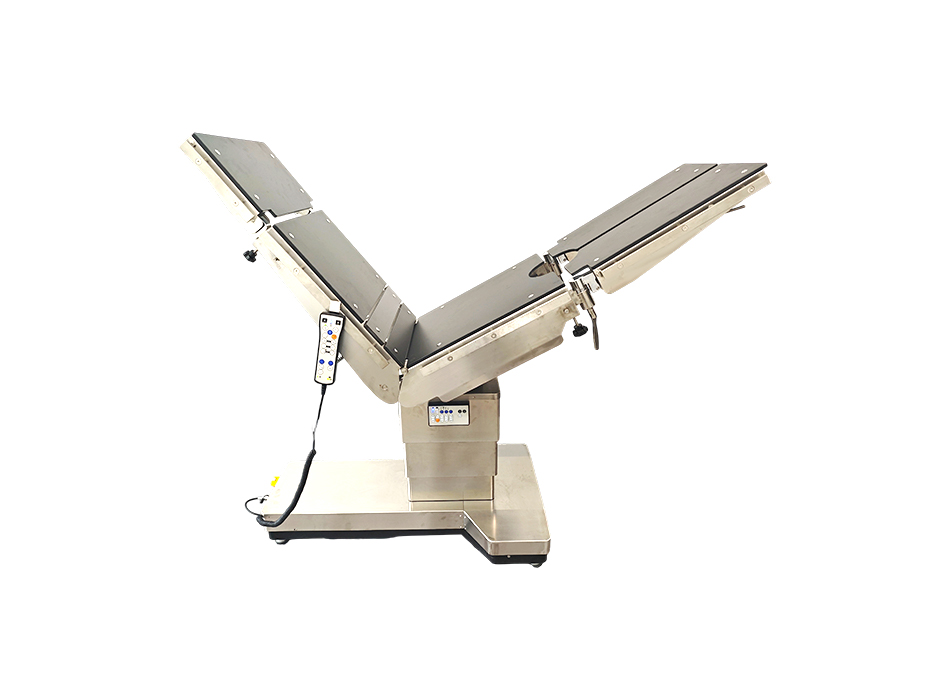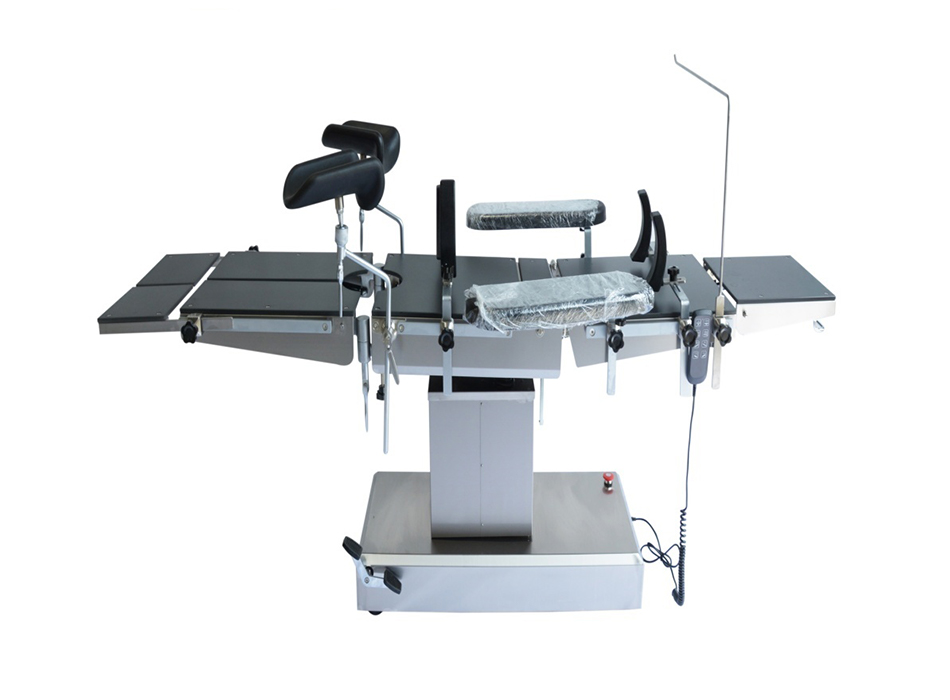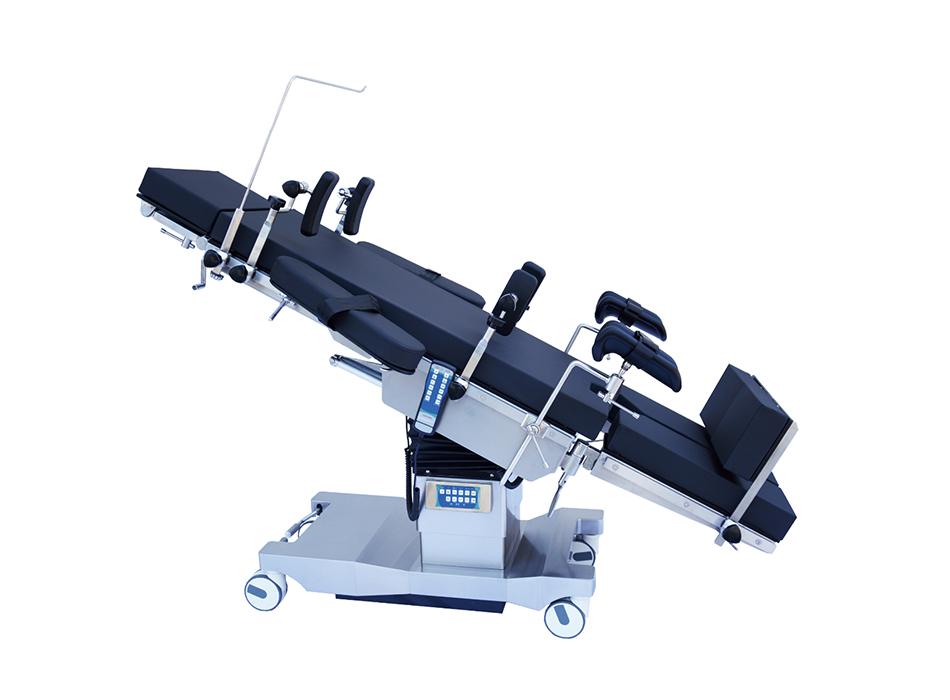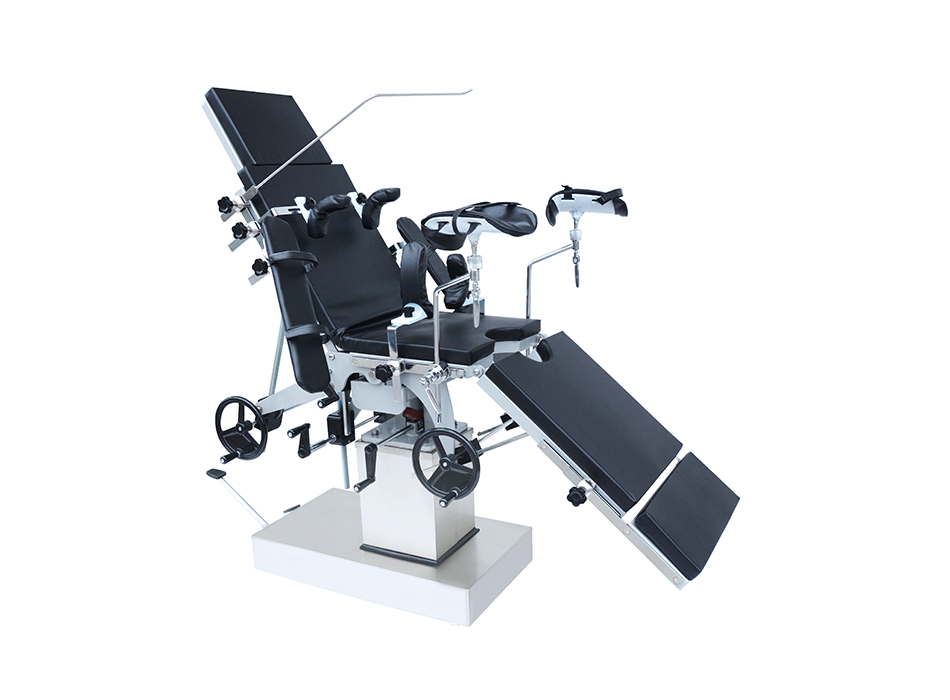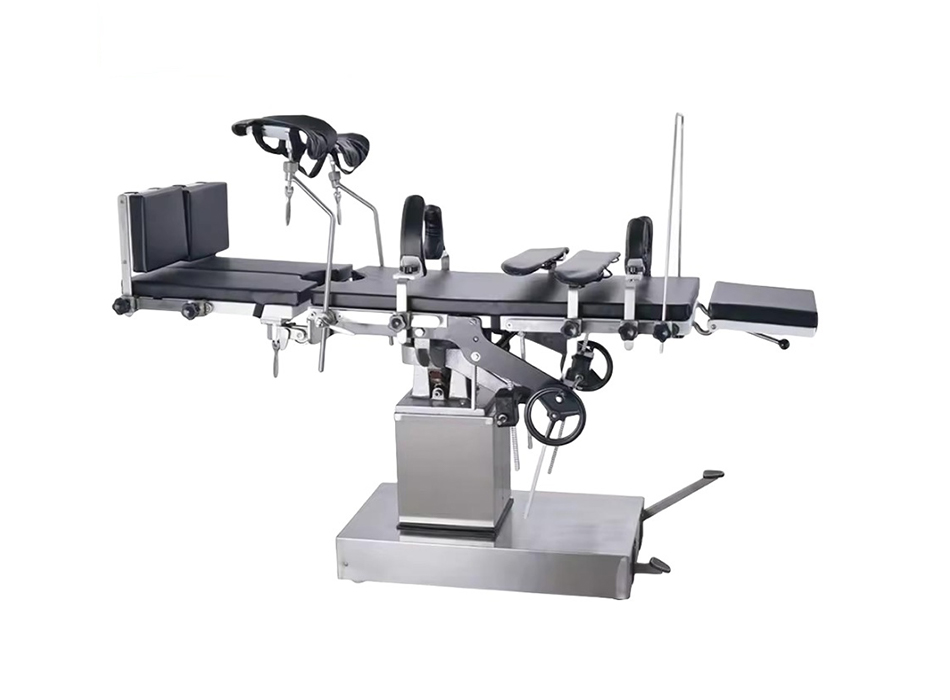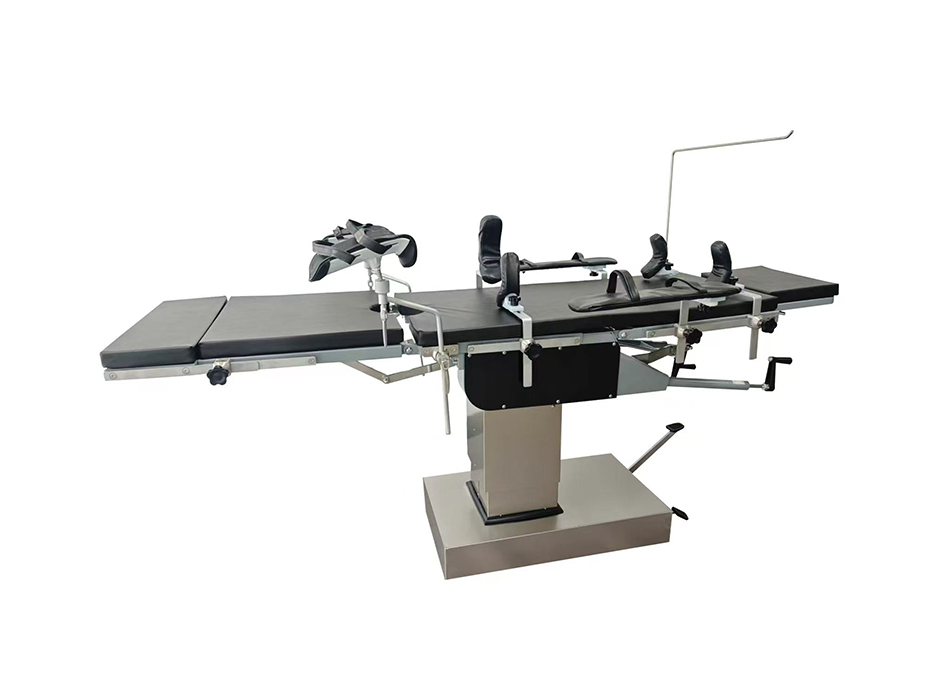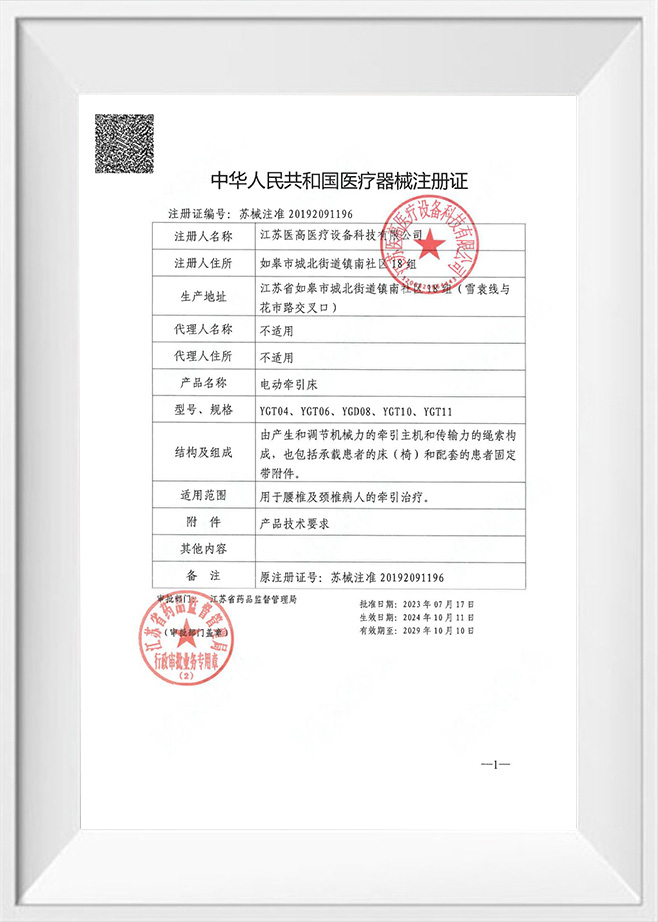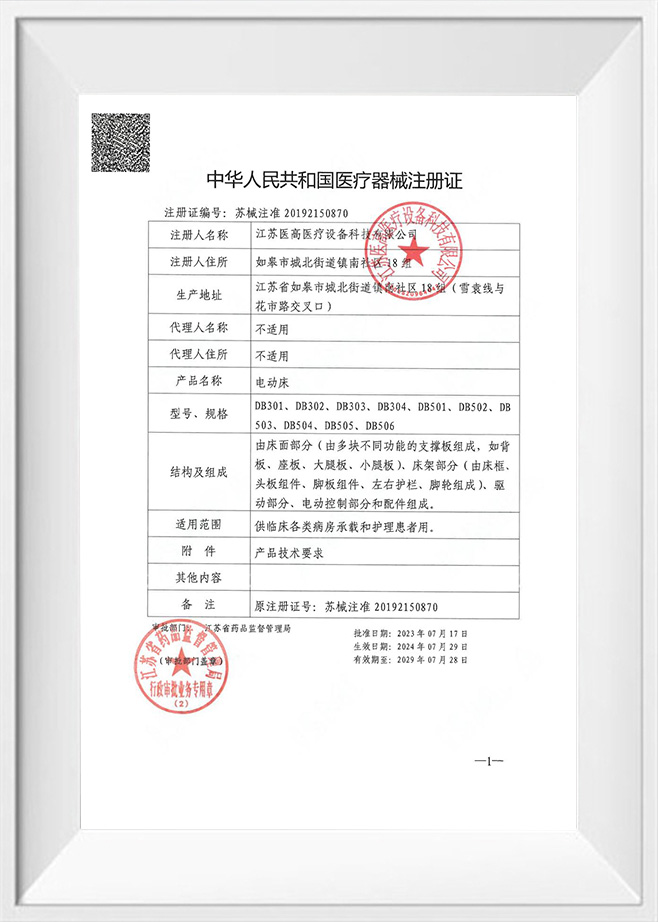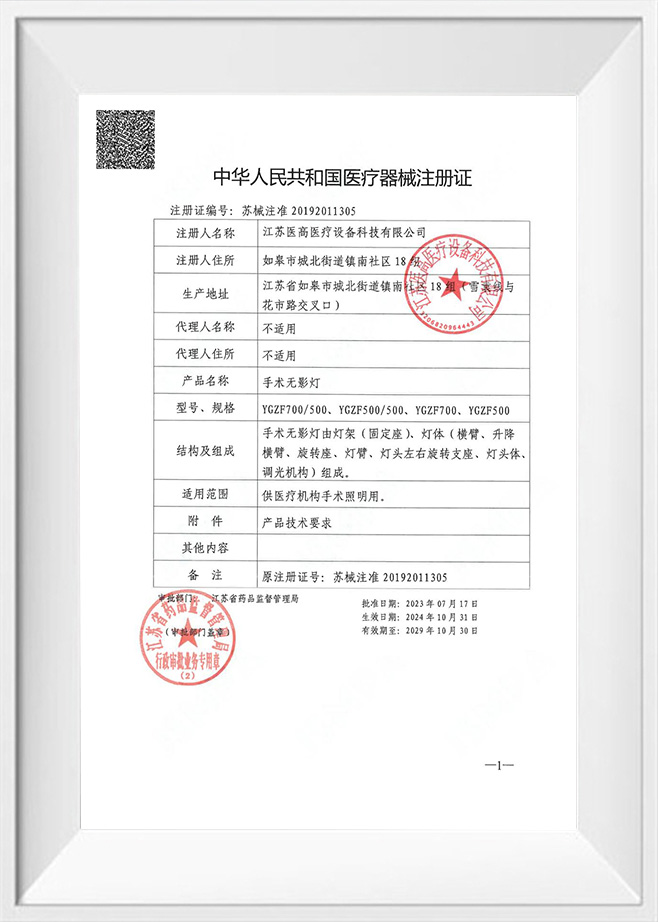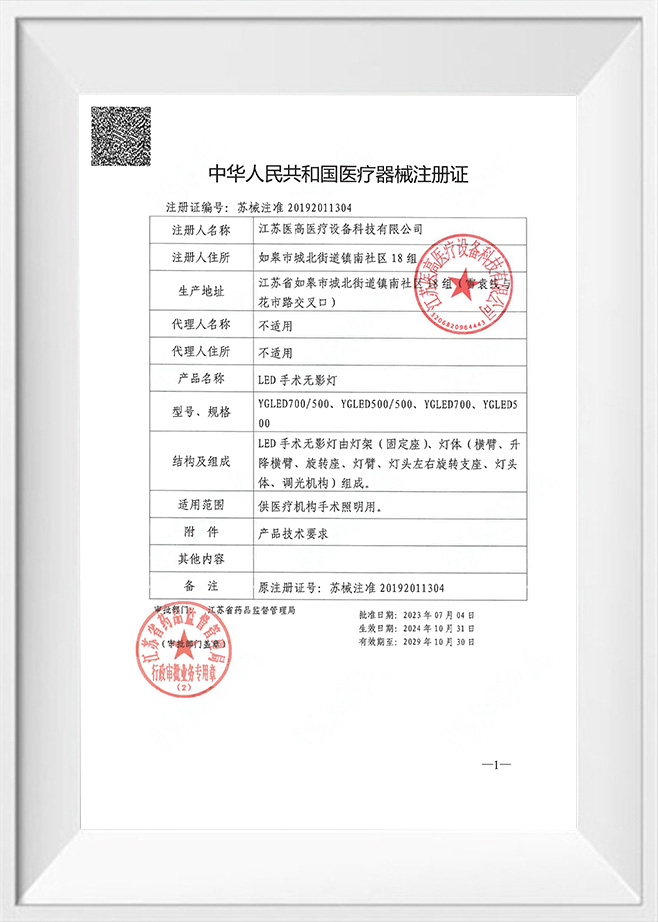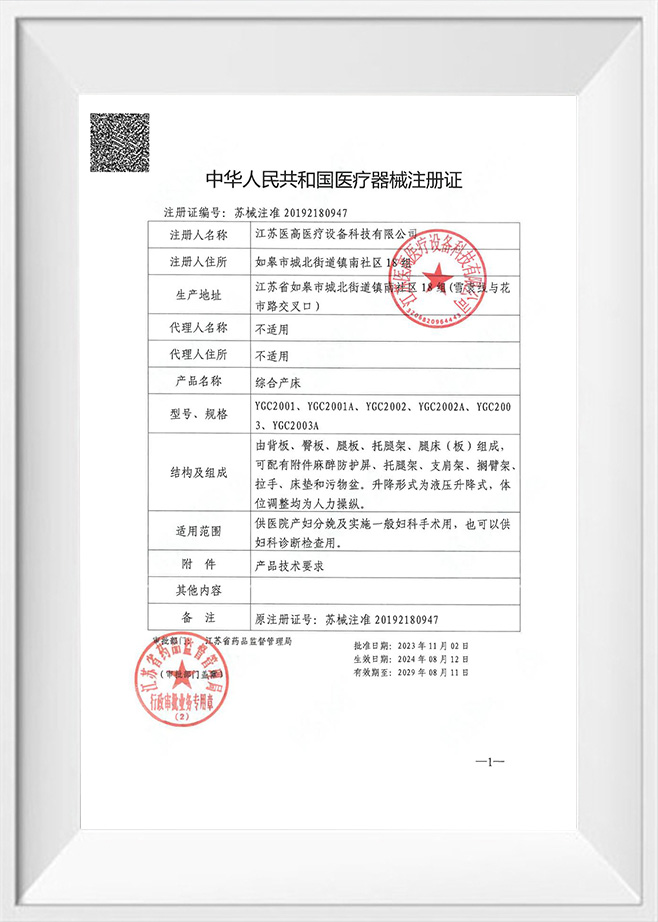Operation table series Manufacturers
The Operation Table Series is a high-performance operating table series designed for various surgical fields. This series of products covers the needs of multiple professional fields such as surgery, gynecology, urology, otolaryngology, and orthopedics, providing medical staff with an efficient, comfortable,e and safe operating environment. Its height-adjustable and adjustable design of each component ensures the best positioning and comfort of the patient during surgery, while also facilitating doctors to perform precise operations. The operating table has a stable structure and strong load-bearing capacity, and can adapt to various complex surgical needs. Some models are also equipped with an advanced electric adjustment system, which can accurately adjust the height and angle of the operating table as needed, greatly improving surgical efficiency and safety.


The company is located in Rugao City, Jiangsu Province, adjacent to Shanghai, with convenient transportation. The factory covers an area of 7,600 square meters. We have an experienced R&D team that can provide OEM and customized solutions according to customer needs to meet personalized applications in different markets.

-
The operating room is a high-stakes environment where every decision, every move, and every tool must be used with the utmost precision. Sur...

-
In healthcare settings, particularly in hospitals and long-term care facilities, patient comfort and well-being are paramount. One of the mo...

-
In the ever-evolving world of healthcare, the role of medical machinery equipment is becoming more pivotal than ever before. From diagnosing...

-
In the healthcare industry, patient comfort and safety are paramount. However, ensuring the well-being of patients also comes with the chall...

-
In modern healthcare, where precision, safety, and reliability define success in the operating room, surgical lighting plays a vital role th...

Operation table series Industry knowledge
As a professional medical equipment manufacturer, Jiangsu Yigao Medical Equipment Technology Co., Ltd. understands that the complexity of modern medicine requires surgical equipment to be highly specialized and adaptable. Operating tables, as core equipment in the operating room, come in a wide variety, each optimized for specific surgical needs and environments. We are dedicated to the research, development, production, and sales of a wide range of operating tables that meet the needs of diverse medical institutions, offering reliable solutions for everything from general-purpose to specialized applications.
1. General-Purpose Operating Table
General-Purpose Operating Tables are a staple in most hospital operating rooms. These tables offer a flexible design, allowing for adjustments in table angle and height, as well as the ability to accommodate a variety of common procedures, including general surgery, thoracic surgery, orthopedics, and obstetrics and gynecology.
Features:
Versatility: They offer basic functions such as lift, forward and backward tilt (Trendelenburg and reverse Trendelenburg positions), left and right tilt, and horizontal table rotation, meeting the needs of most surgical positions. Excellent Versatility: Compatible with a variety of surgical positioning accessories, such as leg rests, headrests, and lateral supports, it can be quickly configured to accommodate different surgeries.
At Jiangsu Yigao Medical Equipment Technology Co., Ltd., our universal operating table series strictly adheres to international industry standards and is ISO 9001, ISO 13485, and CE certified, ensuring exceptional reliability and safety. Our 7,600-square-meter factory in Rugao, Jiangsu, boasts a dedicated R&D team and offers OEM and customized services tailored to individual customer needs, tailored to individual applications in diverse markets.
2. Specialty Operating Tables
With the advancement of medical technology, specialized operating tables have emerged. These tables are deeply optimized for the surgical needs of specific departments, providing greater precision and efficiency.
Orthopedic Operating Tables:
These operating tables are specifically designed for orthopedic surgery, particularly lower limb and spinal procedures. They are often equipped with traction systems for fracture reduction and joint replacement surgeries, providing precise traction and angle adjustment. Neurosurgical Operating Table:
Neurosurgery requires extremely high stability and precision. These operating tables are typically designed with a dedicated headrest system that securely holds the patient's head and provides 360° adjustment for use with microscopes and neuronavigation systems.
Urology/Gynecology Operating Table:
These operating tables typically have removable tops and special fluid collection channels to facilitate intraoperative fluid drainage. They also often feature specialized positioning features, such as split-leg supports, to accommodate procedures such as cystoscopy and transurethral prostatectomy.
Cardiovascular Operating Table:
Cardiovascular surgery relies heavily on C-arm fluoroscopic imaging. The tops of these operating tables are typically constructed of carbon fiber with extremely high X-ray transmittance, ensuring clear, artifact-free intraoperative imaging and providing precise image guidance for the surgeon. 3. Mobile vs. Fixed Operating Tables
In addition to being categorized by function, operating tables can also be categorized by their mobility.
Mobile Operating Tables:
This is the most common type. They are equipped with locking casters, allowing for easy movement and positioning within the operating room. This is particularly convenient for hospitals requiring flexible operating room layouts or requiring clean rooms.
Fixed Operating Tables:
These are typically mounted on the floor or ceiling and cannot be moved. These operating tables are primarily used for ultra-precision surgeries requiring extreme stability, such as certain robotic-assisted surgeries. Their fixed design minimizes any minor vibrations, ensuring absolute stability during surgery.
1. High Stability and Shockproof Design
Neurosurgery procedures often operate at the millimeter or even micrometer level, and even the slightest movement can have serious consequences. Therefore, the primary design requirement for a neurosurgery operating table is exceptional stability.
Sturdy Base and Structure: The base of a neurosurgery operating table is typically wider and heavier, constructed from highly rigid materials to minimize movement and vibration. This differs from the universally movable design of standard operating tables and is intended to ensure that the operating table remains stationary during long, high-load surgeries.
Precise Locking System: In addition to a stable base, an advanced locking system is also crucial. These operating tables typically utilize multi-point electromagnetic or hydraulic locking mechanisms to ensure that once the tabletop is positioned, it remains securely locked, maintaining absolute stability even when the surgeon applies significant force, such as pulling or pressing. At Jiangsu Yigao Medical Equipment Technology Co., Ltd., we have an experienced R&D team that, through precise mechanical design and rigorous testing, ensures our neurosurgery operating tables provide reliable stability under a variety of extreme surgical conditions.
2. Unique Head Frame and Body Support System
Neurosurgery, especially intracranial surgery, requires high-precision fixation and multi-angle adjustment of the patient's head. These are unique features not available on standard operating tables.
Dedicated Head Frame System: Neurosurgery operating tables are often equipped with a complex and compatible dedicated head frame system, such as a Mayfield or similar frame. This head frame securely fixes the patient's skull with screws or clamps, ensuring no head movement during surgery.
Seamless Accessory Integration: These head frame systems seamlessly integrate with precision equipment such as surgical microscopes and neuronavigation systems. The operating table design must consider the mounting interfaces, power cable routing, and spatial layout of these accessories to achieve optimal collaboration between the surgeon, equipment, and patient. Flexible Positioning: To accommodate diverse surgical approaches, neurosurgical operating tables not only feature standard lift and tilt functions but also feature step-by-step adjustments, allowing patients to be positioned in various positions, such as prone, supine, or lateral positions, while maintaining a smooth and impact-free adjustment process.
We are committed to providing OEM and customized solutions, and can equip our neurosurgical operating tables with the optimal head frame system and accessories based on the specific needs of neurosurgical hospitals to meet individual application requirements.
3. C-arm Fluoroscopy and Image Compatibility
Modern neurosurgery increasingly relies on intraoperative imaging guidance, such as C-arm X-ray machines. Therefore, neurosurgical operating tables must possess excellent image compatibility.
Tabletop Material: As mentioned above, the tops of neurosurgical operating tables are typically constructed of carbon fiber composite materials with extremely high X-ray transmittance. This material minimizes X-ray absorption and artifacts, providing surgeons with clear, high-quality real-time images, which is crucial for procedures such as internal fixation screw placement in spinal surgery. Table Design: The table must be cantilevered or free of metal obstructions to ensure the C-arm can freely and unobstructedly circumvent the patient for scanning from various angles, avoiding blind spots.
4. Highly Automated and Precise Control
To facilitate complex intraoperative procedures, neurosurgery operating tables typically feature more intelligent and precise control systems than standard operating tables.
Multi-Articulation: Some high-end neurosurgery operating tables feature multi-articulation of the table, lifting columns, and head frame. Using a remote control or control panel, the surgeon can simultaneously fine-tune multiple dimensions to achieve the optimal surgical position.
Memory Function: To enhance surgical efficiency, many neurosurgery operating tables feature a position memory function. The surgeon can preset and store specific surgical position parameters, which can be recalled with a single click the next time the same procedure is performed, saving valuable time.
At Jiangsu Yigao Medical Equipment Technology Co., Ltd., quality is our top priority, and our entire production process adheres to strict international standards. Our products are certified by ISO 9001, ISO 13485 and other management systems, and comply with CE standards. We aim to provide safe, reliable, and high-quality neurosurgery operating tables to customers around the world, and to create a mutually beneficial and win-win future together.
1. Daily Cleaning and Disinfection Procedures
Proper cleaning and disinfection are the first line of defense against cross-infection. We recommend the following professional steps:
Preparation: Before cleaning, disconnect the operating table from the power supply and remove accessories, such as the remote control. Operators must wear appropriate personal protective equipment, such as gloves, a mask, and goggles.
Preliminary Cleaning: Use disposable wipes or a soft cloth dampened with a mild detergent to wipe the operating table surface to remove visible dirt, such as blood, body fluids, and medication residue. Pay particular attention to areas prone to dirt and dirt, such as crevices, joints, and supports.
Disinfection: After cleaning, thoroughly wipe the entire operating table with an intermediate-level disinfectant that meets hospital infection control standards. The choice of disinfectant is crucial. Avoid strong acids, strong bases, or disinfectants containing chlorides, as these chemicals may corrode stainless steel and plastic components, affecting the appearance and performance of the equipment.
Drying and Inspection: After disinfection, wipe the operating table clean with a clean, dry cloth to ensure no residual moisture remains on the surface. Also, check the tabletop, brackets, and accessories for signs of looseness or damage.
Jiangsu Yigao Medical Equipment Technology Co., Ltd. takes easy cleanability into consideration when designing our products. Our operating table tops are made of smooth, non-porous materials such as high-quality stainless steel or carbon fiber. The modular design of the tabletops is removable in sections, making cleaning simpler and more efficient.
2. Regular Maintenance and Performance Inspection
In addition to daily cleaning, regular professional maintenance is essential. This helps identify and resolve potential problems before they occur, preventing equipment failure at critical moments. Recommended maintenance items include:
Lubrication Inspection: Regularly inspect the operating table's mechanical components, including the lifting column, tilt bearing, and brake system. Add or replace specialized lubricant as needed based on frequency of use to ensure smooth and quiet operation of all moving parts.
Power Supply and Electrical System Inspection: Check the power cord, plug, remote control, and control panel for integrity. Test the backup battery's charge and functionality to ensure the equipment continues to function properly even if the main power supply is interrupted. Tightening Screws and Connectors: Visually inspect and tighten all screws and connectors to prevent loosening due to prolonged use. This is crucial for ensuring patient safety during repositioning.
Functional Testing: Perform a thorough test of the operating table's lift, tilt, rotation, and locking functions at regular intervals to ensure all indicators are within normal ranges. In particular, check the effectiveness of the emergency stop button and brake system.
3. Precautions and After-Sales Service Support
Proper maintenance is not just a matter of technical operation; it is a responsibility to the equipment's assets and patient safety. During maintenance, please observe the following points:
Use of Specialized Tools and Spare Parts: Any replacement parts must be genuine or certified. Incompatible parts may result in decreased performance or even damage to the equipment.
Operator Training: Ensure all operating and maintenance personnel receive professional training and are proficient in the equipment's operating procedures and key maintenance points.
Maintaining Maintenance Records: Create a detailed maintenance record for each operating table, recording the time, content, and defects found during each maintenance session for easy tracking and management.
 Welcome to Jiangsu Yigao Medical
Welcome to Jiangsu Yigao Medical E-MAIL:
E-MAIL:
 ENG
ENG

 English
English Español
Español